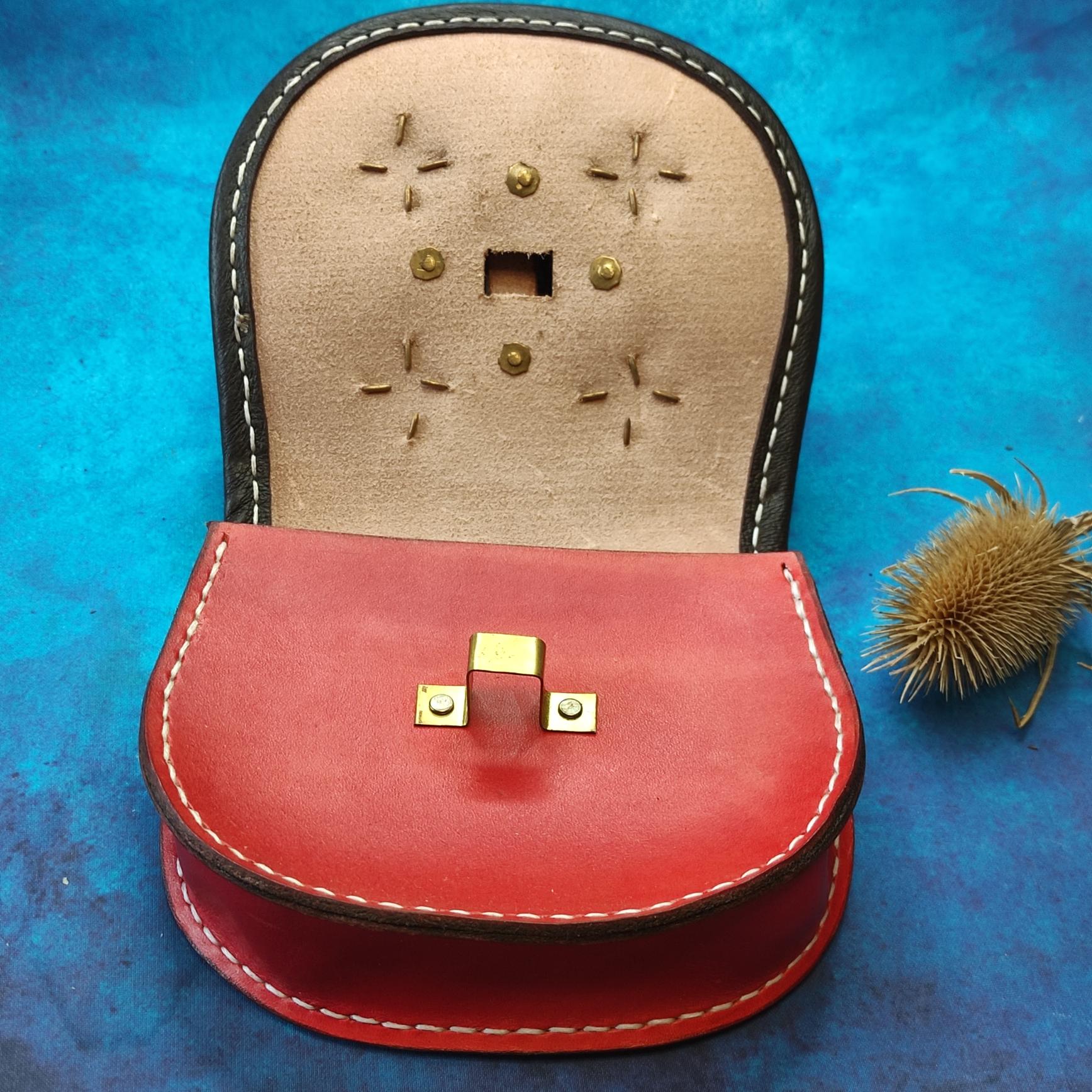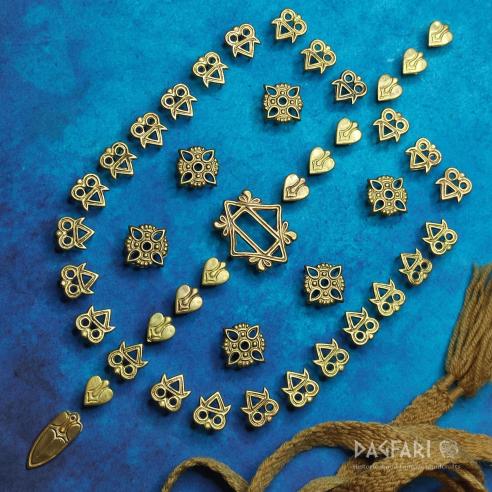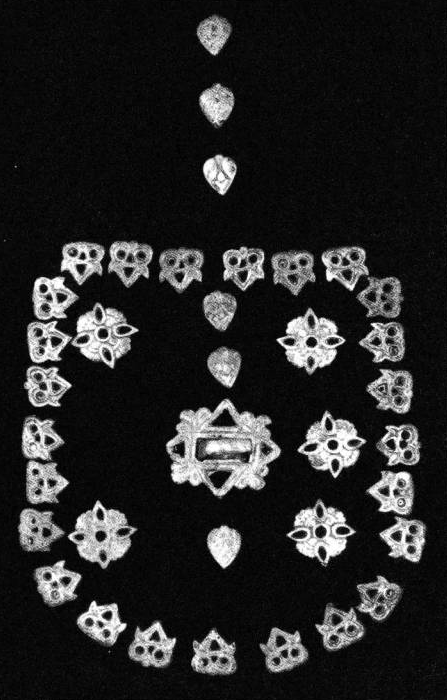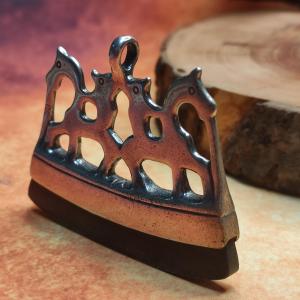To clarify the nomenclature - especially if you want to make a customized bag from us:
The set contains 43 pieces with extra long shanks for a comfortable and high-quality installation in the leather:
A: 1 central large rosette (also sold separately) - 9 g, 3.4 x 4.1 cm
B: 6 x smaller rosettes for bag symmetry - 1 piece 3.2 g, 1.8 x 1.8 cm
C: 25 fittings in the shape of paired bird heads that line the flap of the bag - for the original size of the bag these are one next to the other, for large bags you need to install with regular spacing or tell us to buy separately - 1 pc 2 g, 1.8 x 1.5 cm
D: 10 small heart-shaped decorations on the strap, which nicely follow each other to create a unique motif on the all-metal strap - 1 pc 1.5 g, 1.5 x 1.3 cm
E: 1 strap end with a beautiful design (rivets also included) - 4.5 g, 3.2 x 1.2 cm
G: the whole set of 43 pieces + rivets on the end piece - approx. 100 g
We won't go into too much detail about these amazing jewellery gems. Men's belt ornaments and decorated pouches are chronically familiar to everyone.
Can you guess what medieval man put in these richly decorated leather pouches? Most often flint. The original sizes are just over 10 centimetres wide and wouldn't even fit more than that.
Bags, pouches, pouches or tarsols are typically decorated with many small pieces of metalwork that create a regular ornament. Maybe you prefer the original size, which unfortunately won't hold your keys, mobile phone and snacks (whimper), or on the other hand you choose a practical pouch for all your essentials in a larger size. However, it's a good idea to stick to the typical lyre shape and decorate the solid flap.
We know of complete finds and many rosettes in a similar style. It will therefore be a great addition whether you are reconstructing an early medieval rich man, merchant or warrior from the sites of Scandinavia, the Varangian Guard and inhabitants from the regions of Kievan Rus' and Poland, or representing the Avar and Hungarian horsemen and Slavic tribes who may also have captured these trendy pouches on the trade routes.
Base your selection on fittings from the Birka and Rösta sites, Jamtland (Sweden), Slovak/Hungarian Karos, where even 3 tarsols have been found! Also Shestovitsa, Kiev, Chernigov and Gnezdovo (Kiev Rus) - the similarity to the shape of the clasps on the kaftan from Tarpa or the rosettes on local helmets are certainly not accidental! It was simply the fashion in the 10th century!
The contacts between the Swedish Vikings and the Hungarians are also obvious. Identical finds of bags, fittings, archery equipment and other items and jewellery. Therefore, I am not afraid to say that this bag, although generally called Birka bag, is originally from the Magyars, nomadic horsemen from the eastern steppes, for whom these bags are typical.
Someone assembles the bag one at a time. A typical rosette might have a center eyelet made of leather or die-cut metal.

Installation should be done during sewing, we do not recommend sewing the bag and then finishing the fitting.
The ideal is to buy the hardware and send it directly to the person who will make the bag for you. Or have it sewn directly by us.
This then takes about 4 - 5 weeks.

The choice of leather colour is also up to you. Don't forget that the Vikings were great showmen!

The final covering of the inside of the bag lid with a piece of fabric is optional, but it will show your craftsmanship!

If you just want to install some parts on your bag, I say - why not? It looks great too!






































